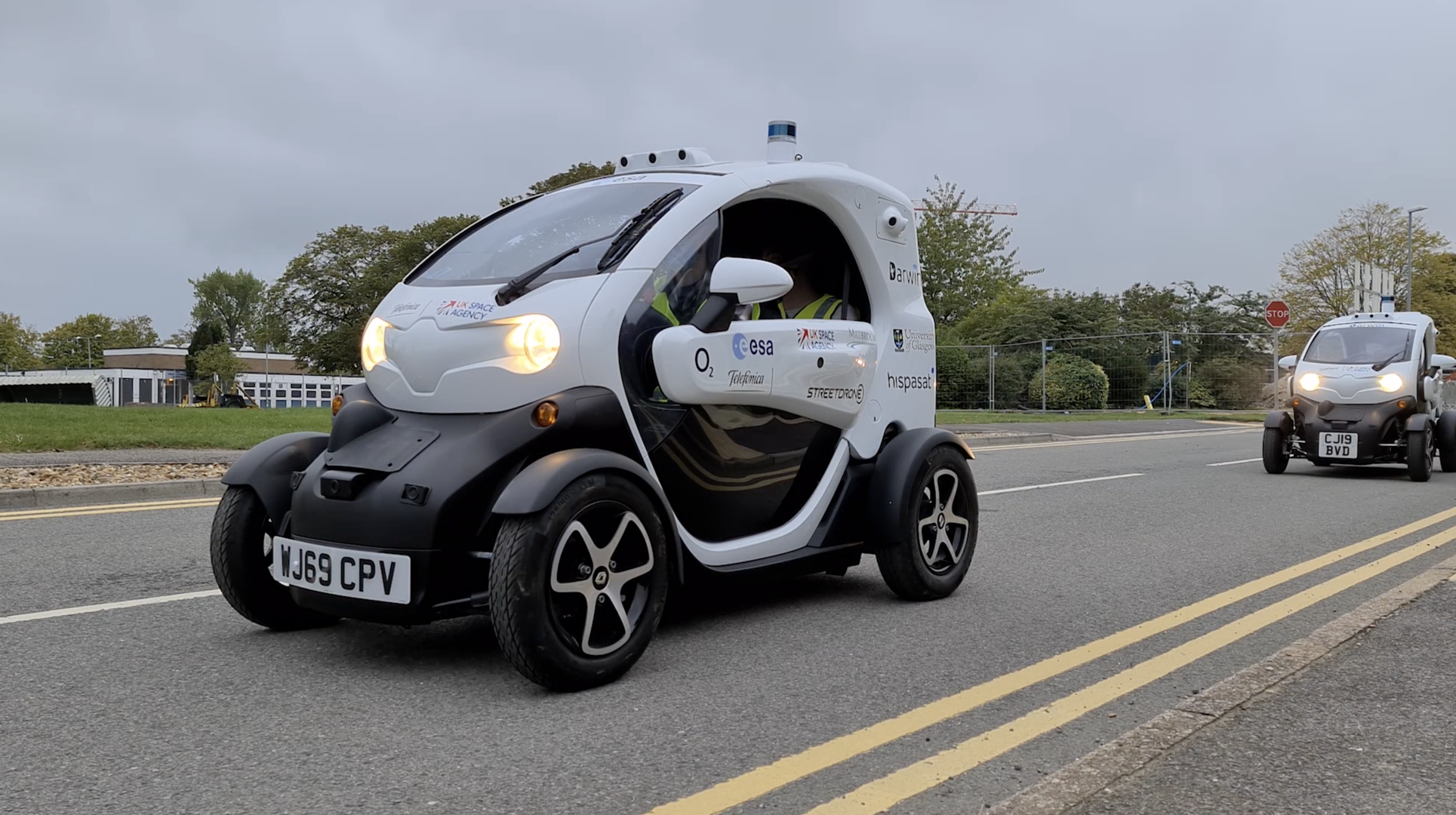5G lab to accelerate self-driving cars
British start-up Darwin and network operator O2 have launched a lab that will use an integrated satellite and terrestrial 5G network to help bring smart, self-driving vehicles to the roads.
Instant and seamless connectivity is needed for cars to navigate autonomously, a requirement that 5G promises to deliver. Developed with support from ESA and the UK Space Agency, the Darwin SatCom Lab is the first lab in the UK to test 5G-enabled driverless cars. Businesses will use the facility, which is based on the Harwell Science and Innovation Campus, to trial technologies that ensure people can be chauffeured in an innovative and safe manner.
Autonomous vehicles have many potential benefits to society, including improved safety and reduced environmental impact, but there are many technical challenges to overcome before they can be used routinely.
Connectivity is key for such vehicles – they must be able to send and receive information on road layouts and obstacles instantly, regardless of the car’s location, to navigate safely.
5G promises to transform society by connecting people and machines, and making information readily available to all. It allows data to be transmitted more reliably and at far greater speeds than previous generations can provide.
But integrating the ubiquity and unprecedented performance of satellites with terrestrial 5G networks is fundamental to provide seamless connectivity. This will allow autonomous vehicles to switch between networks as they move to stay constantly connected and acquire car parameters, even in areas with poor terrestrial network coverage.
The Darwin SatCom Lab, which is based near ESA’s European Centre for Space Applications and Telecommunications (ECSAT), will showcase the integration of satellite and terrestrial networks.
Two Renault Twizy cars have already been converted into connected, autonomous vehicles using sensors and 5G equipment that can be controlled from the Lab.
The cars will use two communication channels – a 5G terrestrial channel supplied by British company O2, and satellite connectivity provided by Spanish satellite operator Hispasat. By seamlessly switching between these channels, constant connectivity is provided to each car.
Companies can use the vehicles to test new space-based infrastructure concepts, such as using satellite data to monitor traffic and calculate emissions of different routes to reduce the environmental impact of journeys.
The Lab is part of Project Darwin, a four-year programme backed by ESA and the UK Space Agency, which aims to develop the next generation of technology for autonomous vehicles.
Amanda Solloway, UK science minister, said: “The UK’s space sector is applying pioneering technologies such as satellite and 5G to essential products and services that will help to transform our everyday lives. I am incredibly excited that O2’s first-of–its-kind driverless car lab will enable our most innovative businesses to test these technologies and bring us another step closer to putting self-driving vehicles safely on our roads.”
Derek McManus, chief operating officer at O2 said: “We’re delighted to announce that the Darwin SatCom Lab is now open for business at Harwell Campus, allowing companies to put theory into practice and test innovative ideas using our connected and autonomous vehicles. The Lab is further proof that O2 is at the forefront of connectivity and accelerating Britain’s recovery by helping British businesses to harness the power of 5G and satellite communications in order to benefit their customers. It’s the next step in getting autonomous vehicles on the road and making the UK’s transport network greener.”
Antonio Franchi, 5G strategic programme manager at ESA said: “ESA is currently developing its own innovation centre for satellite and 5G at ECSAT called the ESA 5G Hub, and we are excited to collaborate on 5G projects with our partners, especially the Darwin SatCom Lab, which like ECSAT, is also located on the Harwell Campus.
“The Darwin SatCom Lab, showcasing the integration of 5G and satellite communications for connected autonomous vehicles, is a great example of how next generation 5G networks will enable new applications and services thanks to their ubiquity, security and resilience.”


